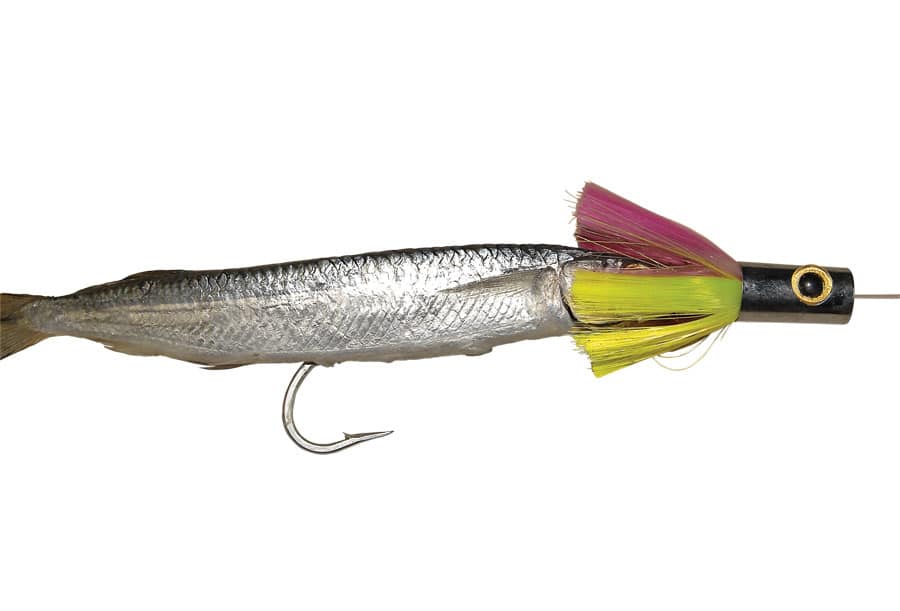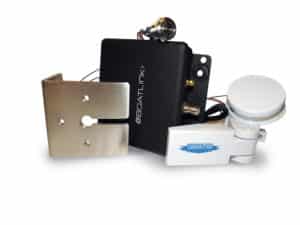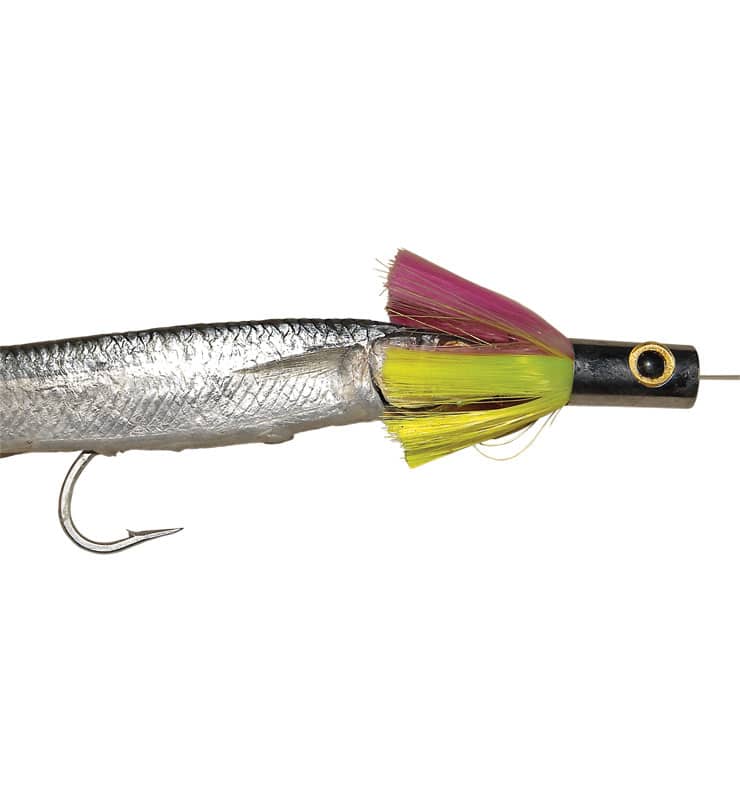
Mono leader material; 12, 34- or 1-ounce egg sinker; 7/0, 8/0 or 9/0 hook; rigging springs; No. 12 stainless-steel trolling wire; nylon tubing; crimping sleeves; loop protector, or ring and grommet; mono cutters; and a hand or bench swager. A skirt or lure is optional. Gary Caputi
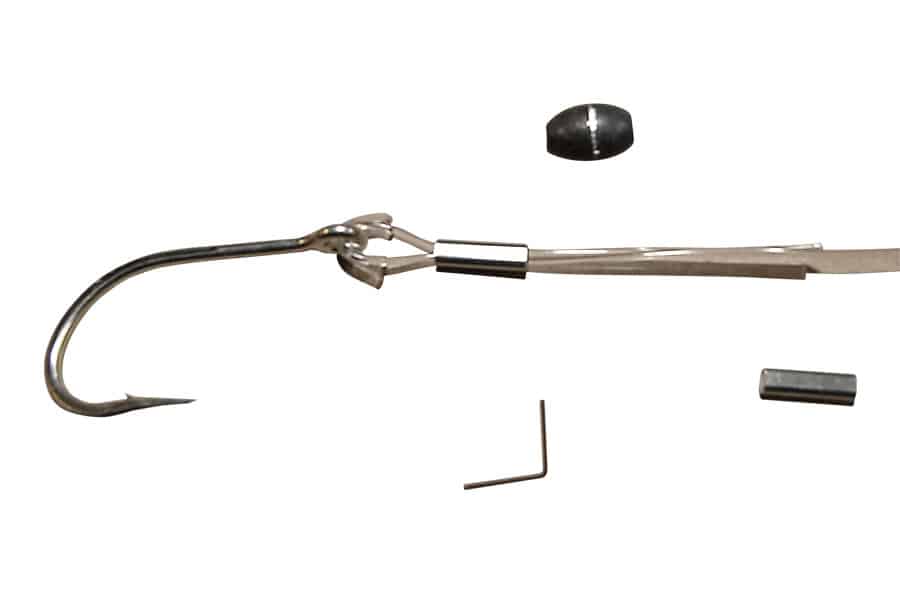
STEP 1
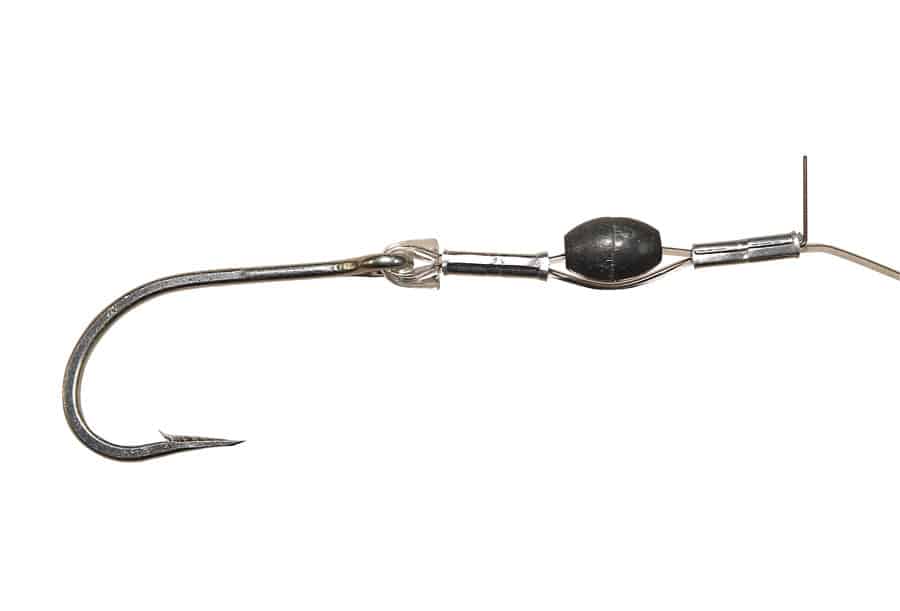
STEP 2
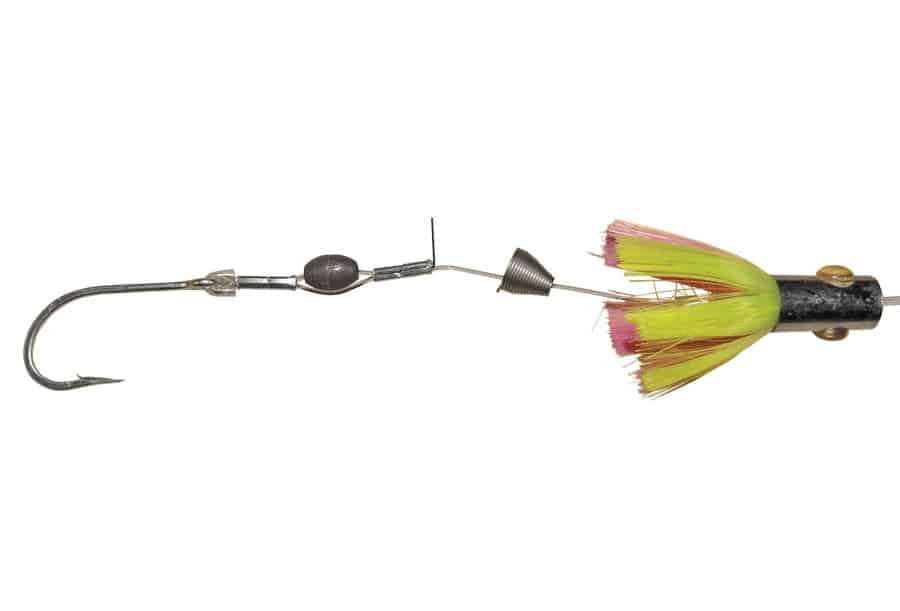
STEP 3
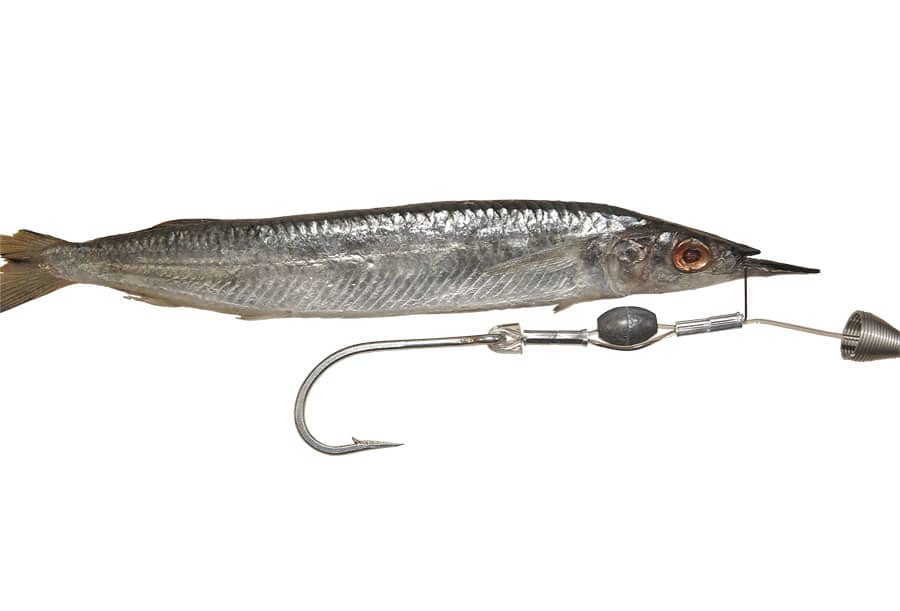
STEP 4
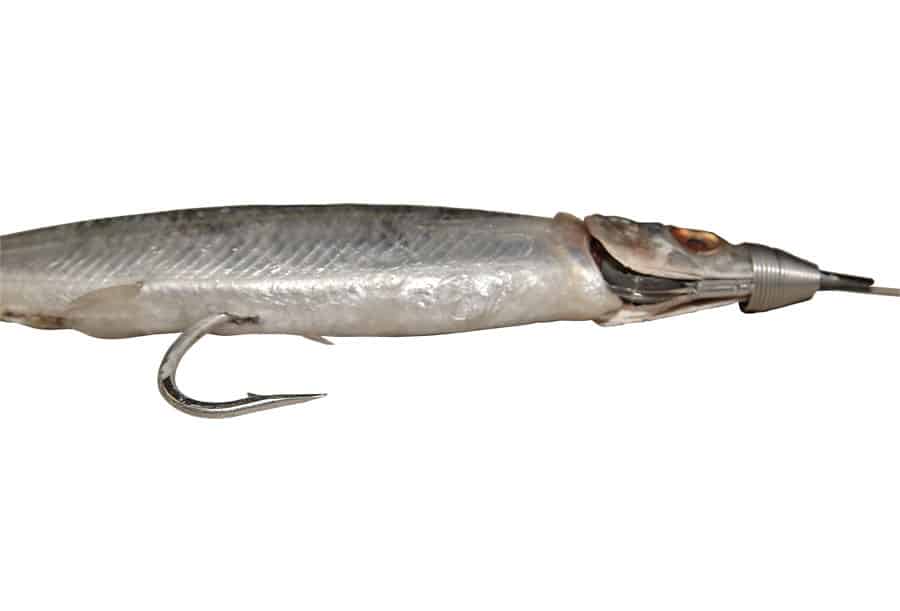
STEP 5
